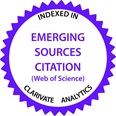Tytuł
Zarządzanie ryzykiem prania pieniędzy w systemie bankowym
Abstract
The issue of risks concerning the money laundering in the European banking system is discussed in the article. Two approaches used by regulators to prevent the mentioned phenomenon: rule-based approach and risk-based approach are described. The author also identified strategies used by banks as entities functioning to maximizing profit in conditions of full and incomplete information having by the FIU. Then, the European countries were analyzed in respect of participating reports on suspicious transactions in the total number of reports sent by all the obligated entities to the national financial intelligence units. Verified was also the value of two indicators: the quality of above-threshold transactions and the quality of financial penalties, which are imposed on banks for failure to comply with the rules on anti-money laundering. Some hypotheses were examined. With the increase in GDP per capita the maximum value of the mentioned financial penalties was increased. There is a negative correlation between the financial sanctions and the share of banks in the total of reported suspicious transactions, which is a result of an extension list of the obligated entities and the lack of the differentiation of sanctions in the various categories of such entities. In connection with the applying of transitional period for implementing the directive by the banks, there is an inverse relationship between the amount of the penalty, and the number of suspicious transactions reports. With the increase in the real value of the minimum amount of abovethreshold transactions, falls the value of the maximum penalty imposed on a financial institution.
Abstrakt
Artykuł podejmuje kwestię przeciwdziałania ryzyku prania pieniędzy w europejskim systemie bankowym. Prezentuje dwa podejścia stosowane przez regulatorów w zakresie zapobiegania wspomnianemu zjawisku, a mianowicie oparte na regułach oraz oparte na ryzyku. Wskazano strategie stosowane przez banki jako podmioty dążące do maksymalizacji zysku w warunkach pełnej i niepełnej informacji posiadanej przez jednostki analityki finansowej. Następnie przeanalizowano kraje europejskie pod względem udziału raportów dotyczących transakcji podejrzanych w ogólnej liczbie sprawozdań przesyłanych przez wszystkie podmioty obowiązane do krajowych jednostek analityki finansowej. Poddano weryfikacji wartość dwóch wskaźników: jakości transakcji ponadprogowych oraz jakości kar finansowych nakładanych na banki z tytułu niedostosowania się do przepisów w zakresie przeciwdziałania praniu brudnych pieniędzy. Zweryfikowano szereg hipotez. Wraz ze wzrostem PKB per capita rośnie maksymalna wartość wspomnianych kar finansowych. Istnieje negatywna korelacja pomiędzy wartością obciążeń a udziałem banków w raportowanych transakcjach podejrzanych, co wynika rozszerzenia katalogu jednostek obowiązanych oraz braku zróżnicowania sankcji w poszczególnych kategoriach wspomnianych podmiotów. W związku z zastosowaniem okresu przejściowego na wprowadzenie dyrektywy przez banki występuje odwrotny związek korelacyjny pomiędzy wysokością kary a liczbą przesyłanych raportów. Wraz ze wzrostem realnej wartości minimalnej kwoty transakcji ponadprogowej spada wartość maksymalnej kary nakładanej na instytucję finansową.
Recommended Citation
Chodnicka, P. (2012). Money laundering risk management in banking system. Problemy Zarządzania, 10(39), 206-222. https://doi.org/10.7172/1644-9584.39.14
First Page
206
Last Page
222
Page Count
16
DOI
10.7172/1644-9584.39.14
Publisher
University of Warsaw








